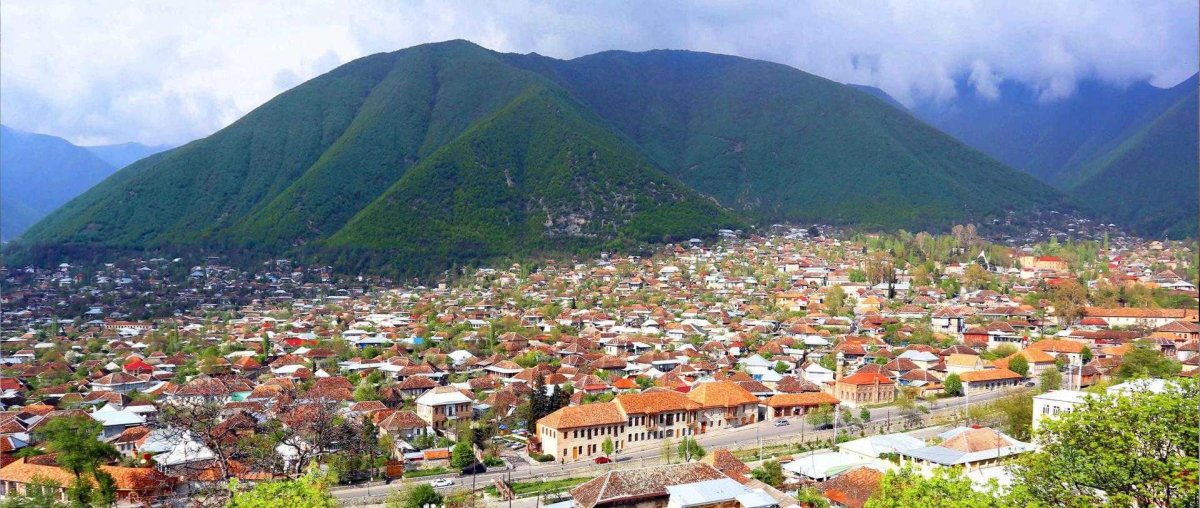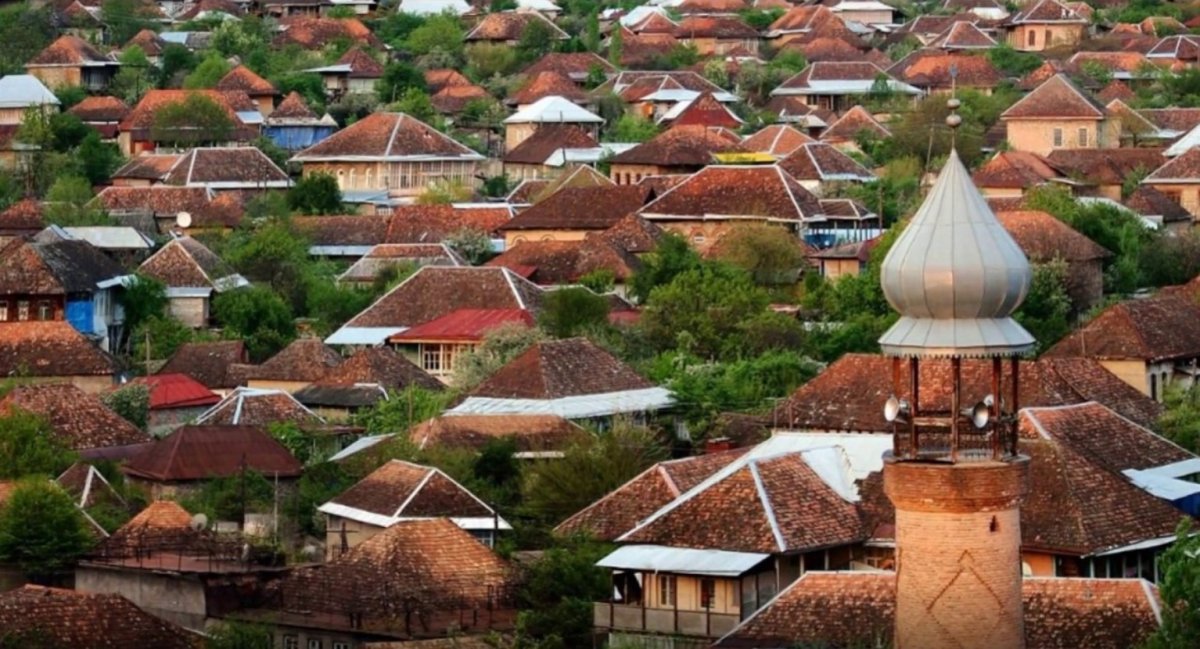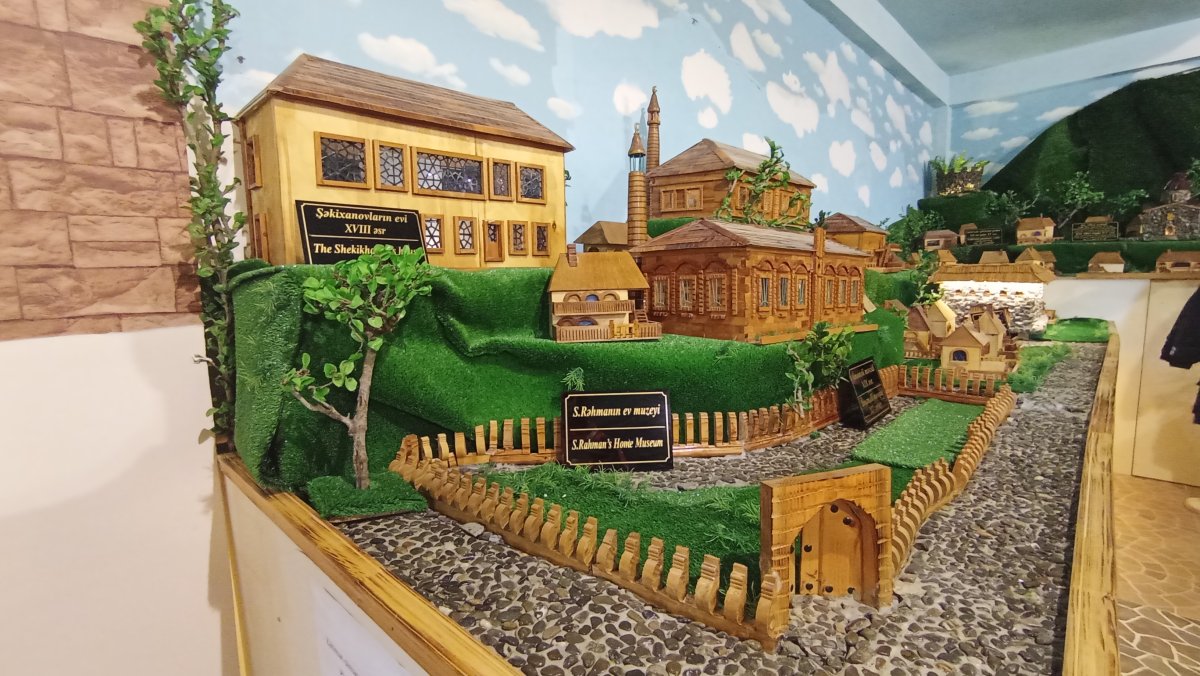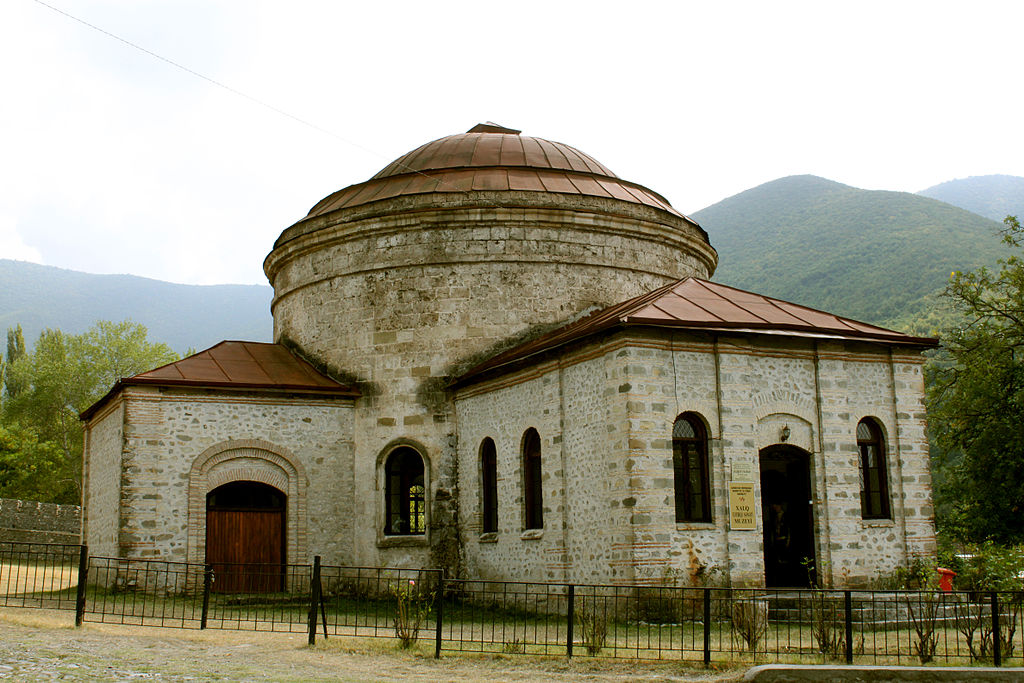Shaki city

- 12-04-2025, 11:58
- Şəki
- Elnur Nəciyev
“On Additional Measures for the Protection of the Historical Part of the City of Shaki” – In implementation of paragraph one of the Decree of the President of the Republic of Azerbaijan, Mr. Ilham Aliyev, dated October 31, 2018, this internet portal was created to ensure the registration of historical and cultural monuments located within the territory of the "Yukhari Bash" State Historical-Architectural Reserve and the establishment of a unified information database. This information database will serve as a source and reference point for future work related to the long-term protection, conservation, restoration, and purposeful use of historical and cultural monuments situated within the territory of the "Yukhari Bash" State Historical-Architectural Reserve. The database also includes not only the tangible and intangible cultural heritage of Shaki but also elements considered its natural heritage (trees and natural landscape areas).
The City of Shaki
Located in the northwestern part of the Republic of Azerbaijan, the city of Shaki is one of the oldest human settlements in the country. Research has confirmed that the history of Shaki spans at least 2700 years. Before examining the period of Shaki's history related to Azerbaijan Albania, attention should also be given to its connections with the Cimmerians, Scythians, and Saka Turks, who are of great significance for the Albanian period. Both the name of Shaki and archaeological findings suggest that Shaki was a homeland of the Scythians and Sakas. Known by the name “Sakasena” – meaning “Land of the Sakas” – Shaki and its surrounding areas were among the most important provinces of Azerbaijan Albania, which encompassed all historical territories of Azerbaijan north of the Araz River. In addition to the Sakasena toponym, other place names from the Albania period that attest to the presence of the Saka include Arsak, Sisakan, Sakan, and Balasakan.
In the Albanian period, starting from the mid-1st century AD, significant socio-political processes took place in Shaki. At the initiative of Saint Eliseus, the first Christian church of Albania and the entire Caucasus was built on the site of an ancient pagan temple in the village of Gis (modern-day Kish) in Shaki. Albanian historian Moses Kalankatlu describes the Kish temple as the first mother church of the East. In the time of the Sassanids and during the Arab invasions, the northern-western territories of the independent Albanian state were inhabited by Khazars and Hun Turks. To repel their attacks toward Shaki, during the reign of Sassanid King Khosrow I Anushirvan (531–579 AD), the fortress walls in Shaki were reinforced, and the "Gates of Shaki" were constructed. These fortifications were severely damaged during the Khazar invasion in 620. The Shaki Emirate, which emerged as the legitimate successor of Albania and retained the title of “King of the Albanians,” existed from 886 to 1104 for over 230 years.
In the 1330s, with the decline and disintegration of the Ilkhanid state, Shaki regained its independence. The Oirat tribe began governing Shaki independently. In 1551, the Safavids launched a military campaign against the Shaki rule. After 20 days of attacks, the fortress walls and towers of Kish were destroyed. The commander of the fortress, Mahmud Bey, deemed further resistance futile, presented the keys of the fortress to the Shah, and surrendered. The Shaki ruling authority was abolished.
In 1743, with the establishment of the independent Shaki Khanate, a new historical opportunity emerged for the development of the city. However, in 1772, the city of Shaki, located in the lowland area, was completely destroyed due to the flooding of the Kish River. Following this event, the inhabitants relocated slightly uphill to the mountainous village of Nukha, laying the foundation for the modern city.
Since that time, four distinct urban planning and architectural layers have formed in Shaki:
1. Urban planning and architectural style from the khanate period: In 1772, Nukha became the new political center of the Shaki Khanate. Merchants settled there, and traditional crafts and silk production developed.
2. Tsarist Russian period: The tsarist era introduced new Russian and European elements to the traditional medieval Azerbaijani architectural style of the city.
3. Soviet period: New administrative buildings were constructed in the city.
4. Independence period starting from 1991: New public and private buildings, including hotels, have been built.

Despite all these diverse influences, due to the area's natural constraints—being surrounded on three sides by mountains—the historical territory of Shaki has preserved its original urban structure. Against the backdrop of a mountain valley that has retained its visual integrity, the cityscape of Shaki is still dominated by traditional historic buildings.
"Yukhari Bash" State Historical-Architectural Reserve"
The “Yukhari Bash” State Historical-Architectural Reserve was established in 1967 by the Soviet government of Azerbaijan with the aim of preserving the historical part of the city of Shaki. Within its approved administrative boundaries, the reserve covers a total area of 283 hectares. 20% of Shaki city's total population (13,500 people) resides within the reserve territory. As a result, the reserve area has the characteristics of a densely populated urban space, with a population density of 482 people per square kilometer.
Within the territory of the reserve, there are 9 historical-architectural monuments of national significance, 1 archaeological monument, and 1 park-monumental site. Additionally, 15 historical-architectural monuments are classified as locally significant. Furthermore, the reserve administration proposes adding hundreds more buildings—such as residential houses, factories, artisan workshops, etc.—to the list of historical-architectural monuments. The “Yukhari Bash” State Historical-Architectural Reserve is located in a mountainous area with beautiful nature and lush vegetation. With their distinctive high-pitched roofs, wide balconies, and gardens, the traditional Shaki houses form a consistent and characteristic visual integrity of the historical urban landscape against the backdrop of majestic mountain slopes. This natural landscape surrounding Shaki plays an extremely important role in its identity, and the natural area—covering approximately 72 square kilometers—is considered an integral part of the city's historical heritage. The city's layout and growth patterns have been directly connected not only to its economic life and related activities but also to the topography of the land on which it is situated.
In short, the historical part of the city of Shaki—currently preserved under the name “Yukhari Bash” Reserve—is a beautiful example of an architectural ensemble that has maintained its traditional character since the late 18th century. In construction, preference was given to local materials such as bricks and river stones, and local architectural elements such as steeply pitched roofs covered with tiles. Burnt bricks were widely used as protection against floods and heavy rains. Until the early 20th century, large gardens were established for the cultivation of mulberry trees to support sericulture, which was the main economic activity of Shaki.

